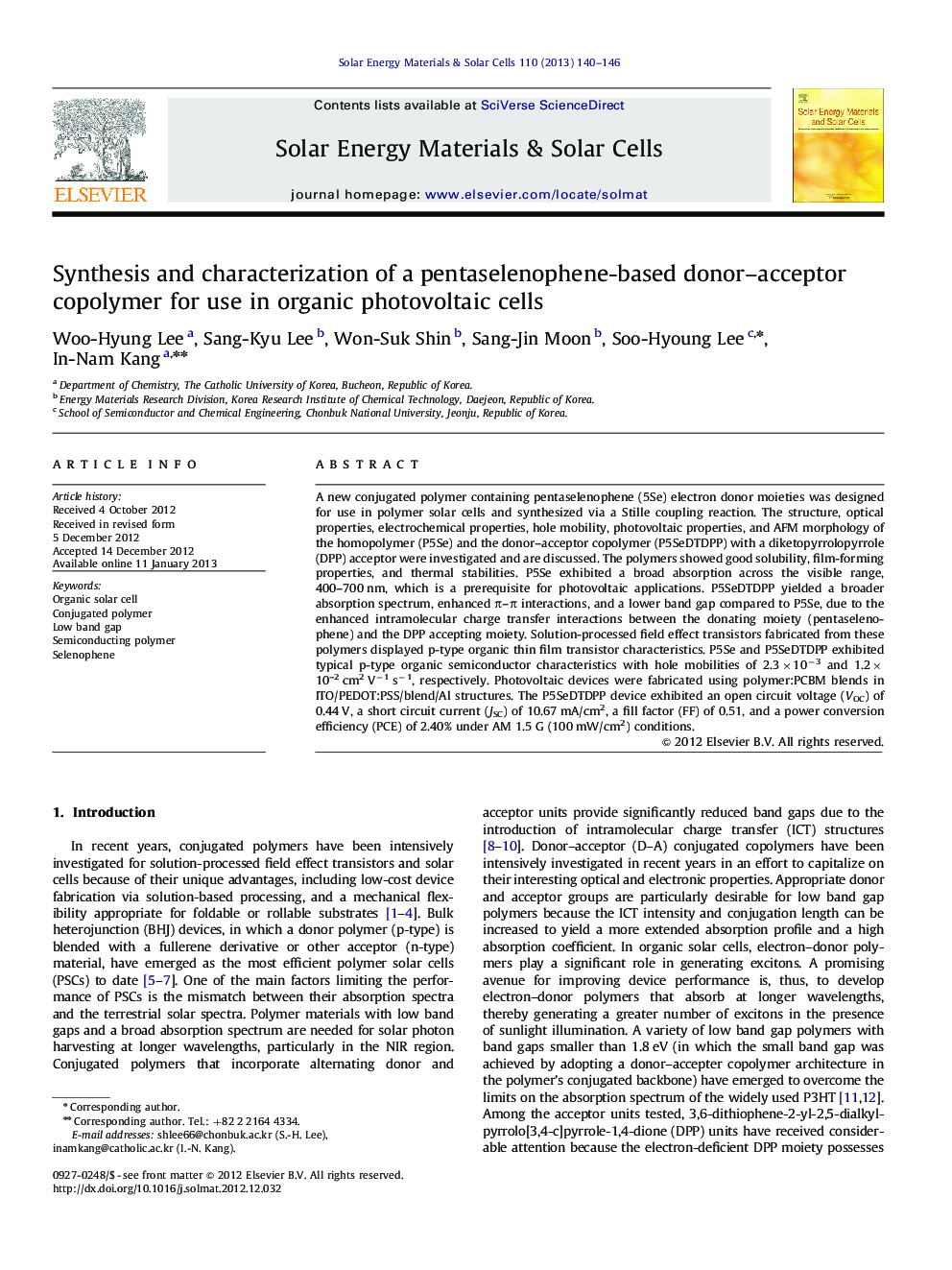| Article ID | Journal | Published Year | Pages | File Type |
|---|---|---|---|---|
| 78597 | Solar Energy Materials and Solar Cells | 2013 | 7 Pages |
A new conjugated polymer containing pentaselenophene (5Se) electron donor moieties was designed for use in polymer solar cells and synthesized via a Stille coupling reaction. The structure, optical properties, electrochemical properties, hole mobility, photovoltaic properties, and AFM morphology of the homopolymer (P5Se) and the donor–acceptor copolymer (P5SeDTDPP) with a diketopyrrolopyrrole (DPP) acceptor were investigated and are discussed. The polymers showed good solubility, film-forming properties, and thermal stabilities. P5Se exhibited a broad absorption across the visible range, 400–700 nm, which is a prerequisite for photovoltaic applications. P5SeDTDPP yielded a broader absorption spectrum, enhanced π–π interactions, and a lower band gap compared to P5Se, due to the enhanced intramolecular charge transfer interactions between the donating moiety (pentaselenophene) and the DPP accepting moiety. Solution-processed field effect transistors fabricated from these polymers displayed p-type organic thin film transistor characteristics. P5Se and P5SeDTDPP exhibited typical p-type organic semiconductor characteristics with hole mobilities of 2.3×10−3 and 1.2×10–2 cm2 V−1 s−1, respectively. Photovoltaic devices were fabricated using polymer:PCBM blends in ITO/PEDOT:PSS/blend/Al structures. The P5SeDTDPP device exhibited an open circuit voltage (VOC) of 0.44 V, a short circuit current (JSC) of 10.67 mA/cm2, a fill factor (FF) of 0.51, and a power conversion efficiency (PCE) of 2.40% under AM 1.5 G (100 mW/cm2) conditions.
► Synthesis and characterization of a pentaselenophene-based donor–acceptor copolymer. ► The copolymer exhibits low band gap property (1.27 eV). ► Photovoltaic properties of the polymers were examined.
